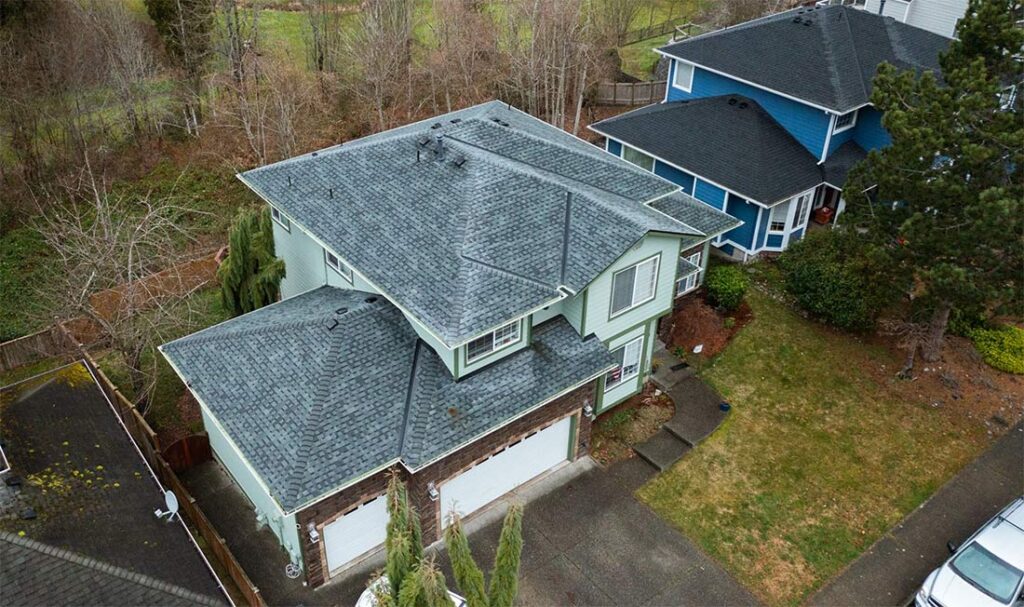The idea of replacing or installing a roof during the winter months may not seem logical to some homeowners, but it can be done with proper planning and the work of seasoned professionals.
Join us as we elaborate on the considerations and precautions associated with replacing or installing roofs in winter. In addition, see where to find an affordable asphalt roofing company in Seattle.
Advantages of Winter Roof Installation
Winter is typically considered the offseason for roofing contractors, meaning you may have an easier time scheduling the project and securing the services of reputable contractors. With fewer projects on their hands, roofing companies can dedicate more attention to your specific needs.
The colder temperatures in winter can lead to better long-term adhesion and sealing of roofing materials, resulting in quicker installation. The absence of extreme heat can also prevent the materials from drying out too quickly, allowing for better sealing and longevity.
Considerations for Winter Roof Installation
Before starting a winter roof installation, there are some considerations that need to be addressed, such as:
- Local weather conditions: Extreme weather events, such as heavy snowfall or freezing rain, can delay the project or compromise the installation process. It is essential to work with experienced contractors who are familiar with local weather patterns and can adapt accordingly.
- Material suitability: Some roofing materials, such as asphalt shingles, are more suitable for installation in colder temperatures. Consult your roofing contractor on the best material options that can withstand the winter conditions in your area.
- Proper ventilation and insulation: Adequate ventilation and insulation are crucial for winter roof installations. Proper ventilation helps prevent ice dams and condensation buildup, while insulation helps maintain a comfortable indoor temperature and prevents heat loss.
Ensuring these aspects are addressed during installation is vital for long-term performance and energy efficiency.
Precautions for Winter Roof Installation
Safety should be the top priority during any roofing project, especially in winter when conditions are a bit harsh. Contractors should follow proper safety protocols, such as using appropriate safety equipment and securing the work area to prevent accidents. Homeowners should also ensure clear pathways and remove any obstacles that may hinder the installation process.
Other precautions that should be taken during winter roof installation include:
- Ice and snow removal: Before installing a new roof, it is necessary to remove any existing ice or snow accumulation. This ensures a clean and stable surface for the installation process. Ice and snow removal should be performed carefully to avoid damage to the underlying structure.
- Proper sealing: Winter installations require meticulous attention to detail to ensure proper sealing and protection against moisture. Contractors should take extra care to seal all joints, edges, and flashing to prevent water infiltration and potential damage.
Let the Pros at Asset Roofing Handle All Roofing Issues for You
Experience exceptional roofing services with Asset Roofing. Our qualified team of roofing experts specializes in metal and shingle roofing repairs and replacements. Trust us as one of the leading roofing companies in Seattle to keep your home safe and secure.
Want to learn more about our services? Get in touch with us today for a free consultation and experience our excellent service firsthand.


